Regional Collaboration for Marine Megafauna Brings Shark Management Tools to the Table
Conservation and management of sharks and rays must be an international effort because many species move regularly across regulatory boundaries. For the Caribbean Region this may be particularly complex as breeding grounds, nursery areas, foraging habitat and migratory corridors for individual species may occur in the EEZ of multiple independent nations as well as international waters. Unfortunately, we only have a cursory understanding of species occurrence, habitat usage and movement across much of this area. While the focus of our current study, was gathering information on hammerheads in Trinidad, the long-term goals of our team are to generate data across elasmobranch species needed for coordinated international management throughout the western Atlantic Ocean. Therefore, being invited to present at the Gulf and Caribbean Fisheries Institute (GCFI) Annual Meeting in the Marine Megafauna special session, seemed like an ideal opportunity to continue to build our network of collaborators.
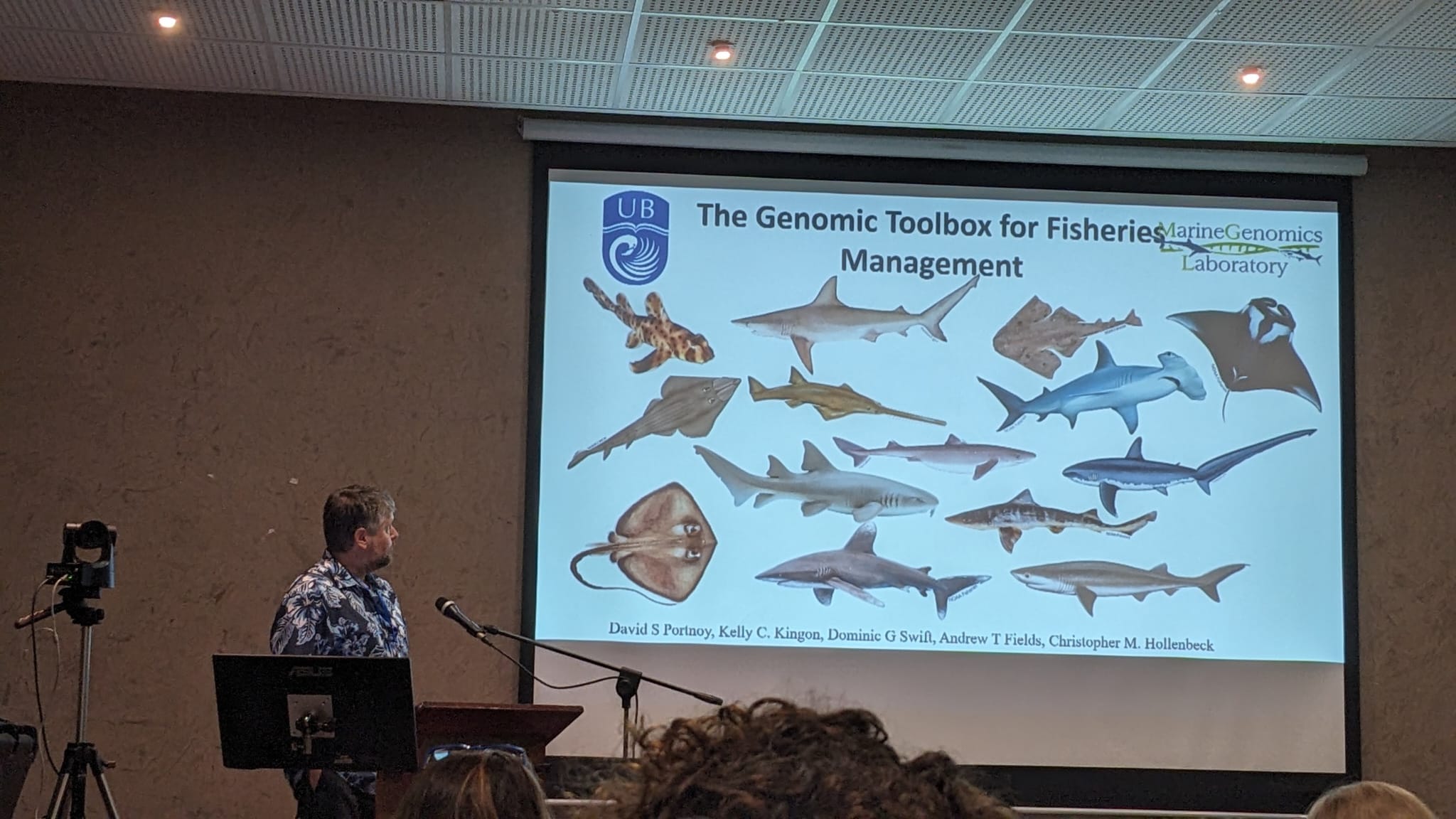
1. Dr. David Portnoy giving his talk on the genomic toolbox for elasmobranch management at the Gulf and Caribbean Fisheries Conference in Guadeloupe in the Marine Megafauna Session. Photo © Kelly Kingon
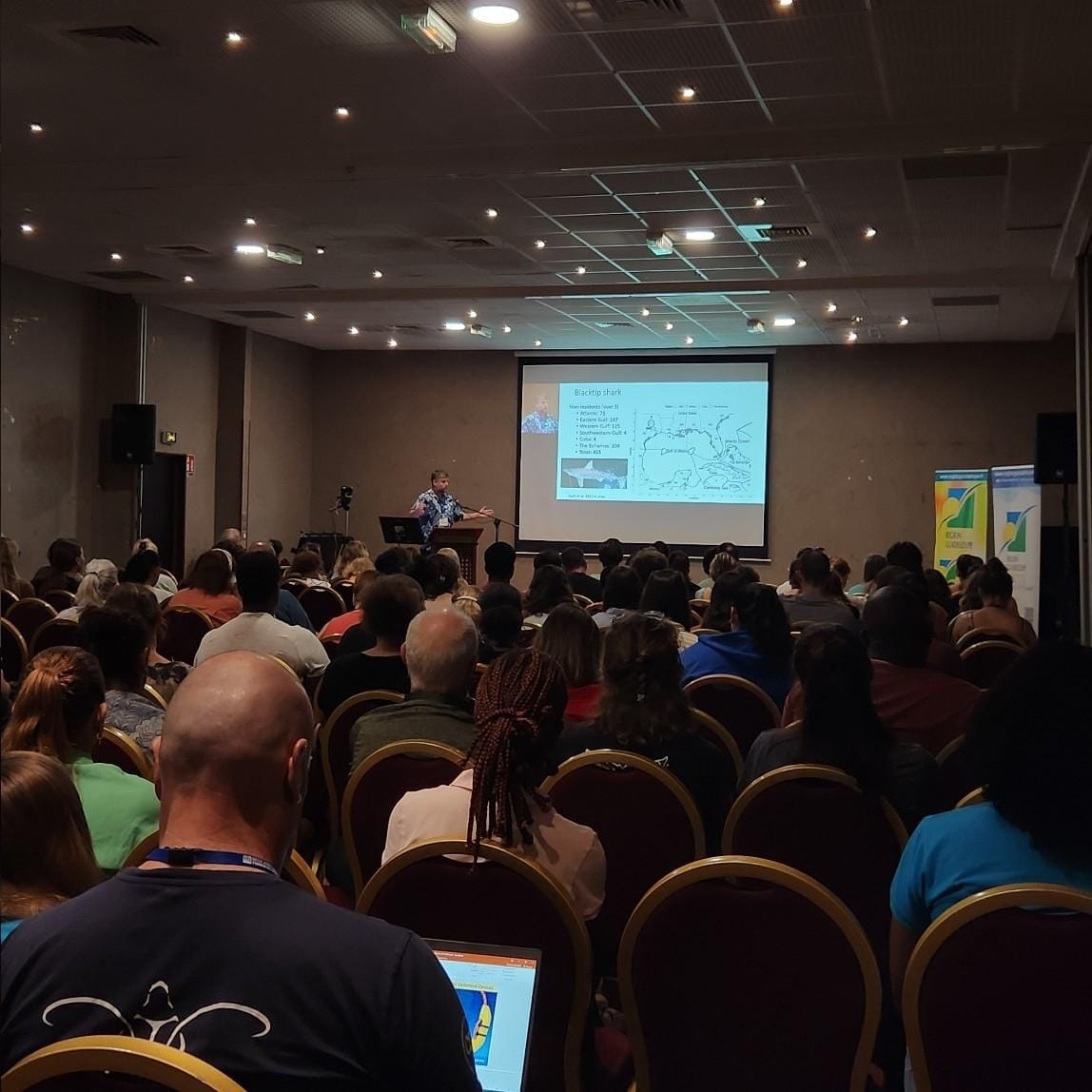
6. Another picture of Dave giving his talk showing how well attended and engaged the audience was. Photo © Zara Zuniga
The mission of GCFI is to support conservation, restoration and management of marine resources in the greater Caribbean and Gulf of Mexico regions. The organization was funded in 1947 and holds annual meetings, changing locations ever year. These meetings are critical to the Institute’s mission because they bring together government agencies, non-government organizations, fishers, scientists and other stakeholders for a series of talks and social events that facilitate communication and collaboration. Kelly is a long-time participant having attended her first meeting in 2009 and currently sits on the GCFI board.
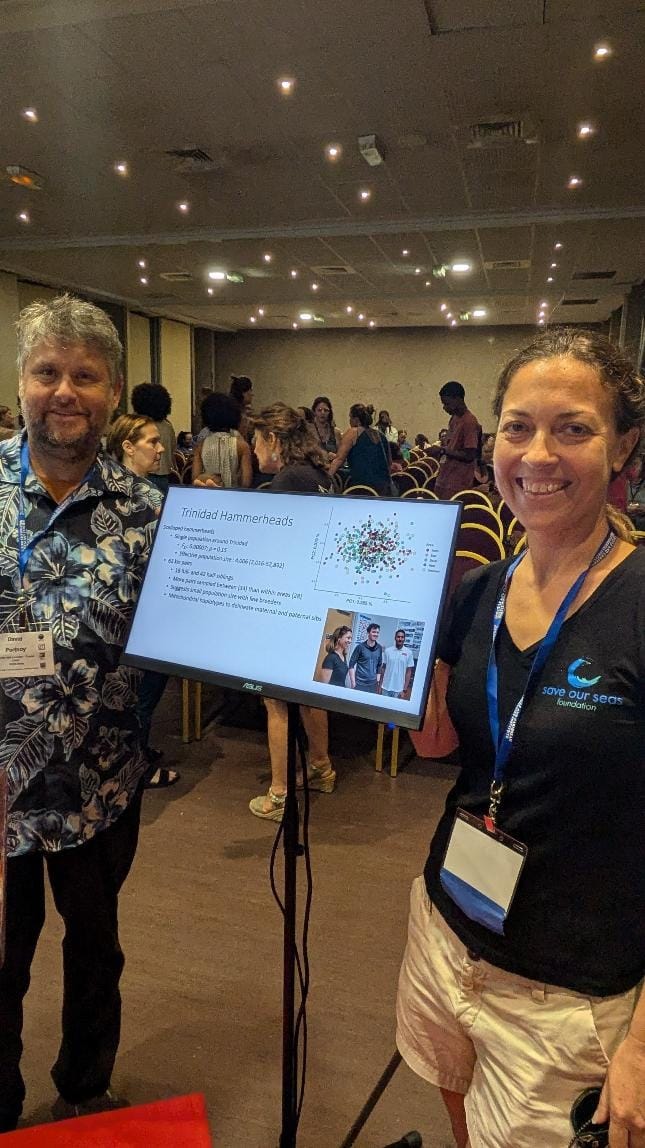
7. Dave and Kelly beside one of the screens showing our talk with some of the Trinidad information after Dave’s presentation. Photo © Fadilah Ali
This year’s meeting was held in Guadeloupe, a group of islands between Dominica and Antigua and Barbuda, that is part of the French West Indies. Guadeloupe has coral reefs, waterfalls and an active volcano amongst its natural attractions, and the meeting was held in Le Gosier, a seaside city in the east. Traveling to Guadeloupe can be tricky and both of us had to fly into Miami and stay overnight before catching a morning flight to Pointe a Pitre. Upon arrival we took an arranged car to our accommodation, a two-bedroom apartment within walking distance of the meeting venue. Given the length of travel (over 30 hours for Dave and a couple days for Kelly) we decided to have a quick explore locally, followed by an early dinner and bedtime to prepare for the week of conference activities.
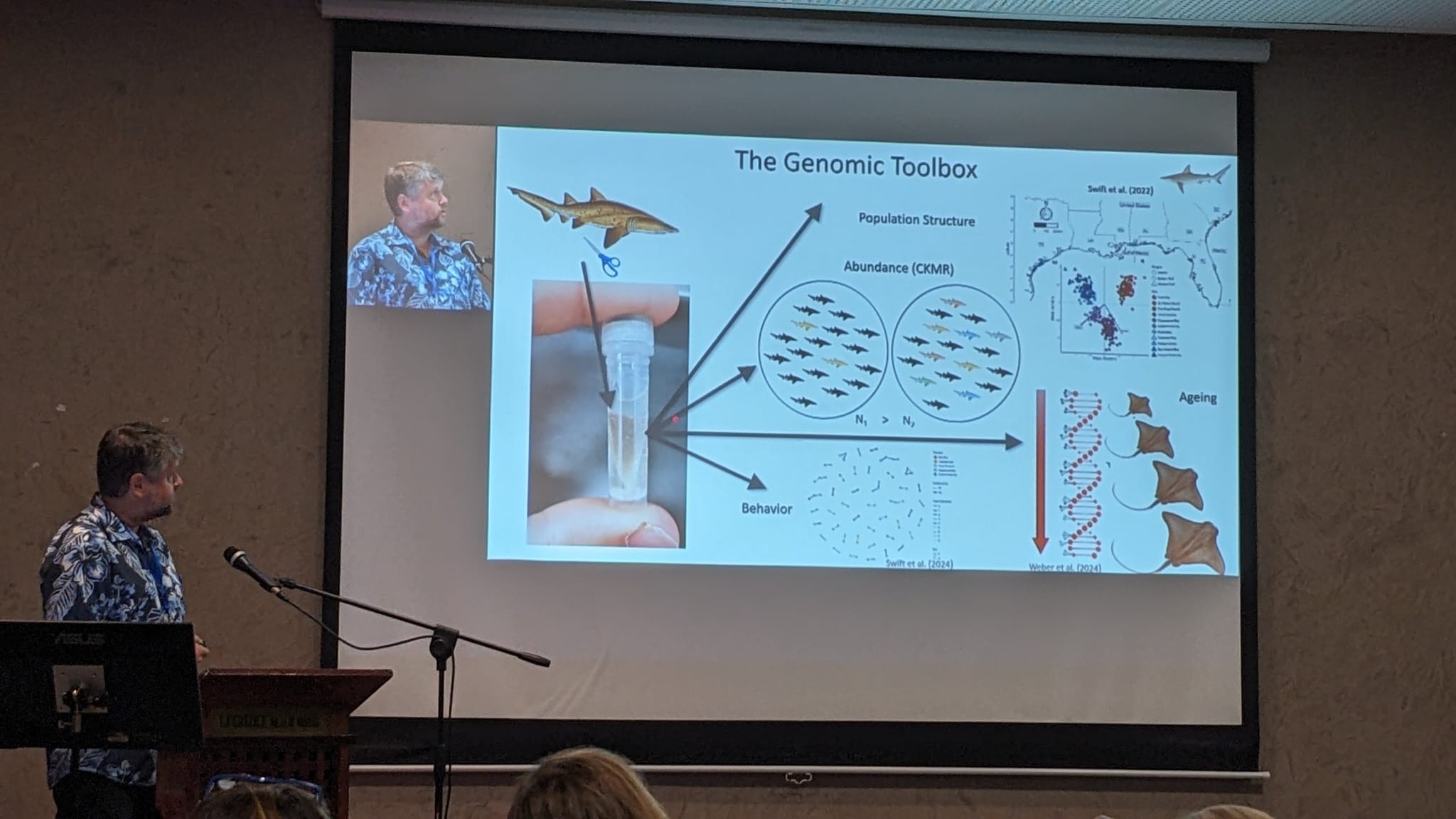
Dave deep in the midst of his talk discussing the genomic toolbox he uses for sharks and rays in his studies. Photo © Kelly Kingon
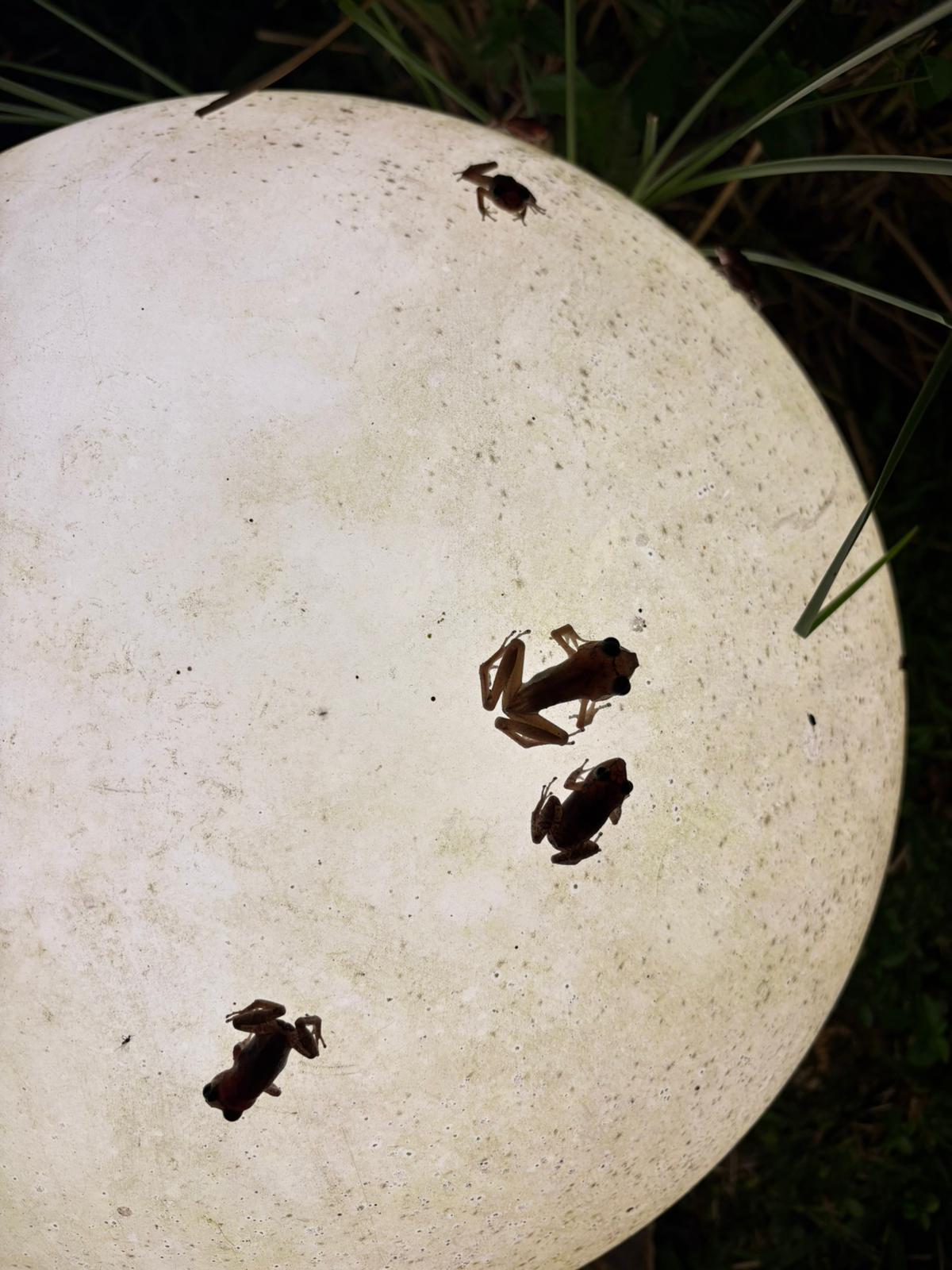
5. Some of the many frogs on the lights and other features at the brewery. Photo © Ori Tzadik
After two intense days of presentations, meetings, posters and social events where we met with numerous Caribbean colleagues, it was time for the special session, “Marine Megafauna: Guiding the Way to Improved Ocean Management”. The focus was research and conservation efforts in the region on sea turtles, marine mammals, birds, and elasmobranchs. Our invited talk was part of the opening series of talks in the session and focused on genomic approaches to generate data needed for elasmobranch conservation and management. The time frame for the talk was only 10 minutes, and even though the topic could have filled several full-length lectures, we made it fit. The feedback we received was encouraging and there was general interest in applying techniques used in our current SOSF grant more broadly. At the end of the special session Dave was asked to sit on a panel that lead a general discussion about lessons learned from the talks and approaches needed in the future. From the standpoint of our long-term research goals, the meeting was a success and led to additional connections with others in the region who will work with us to continue the pursuit of elasmobranch conservation. The other talks in the session were also very informative and will provide additional knowledge and insight to guide our work.
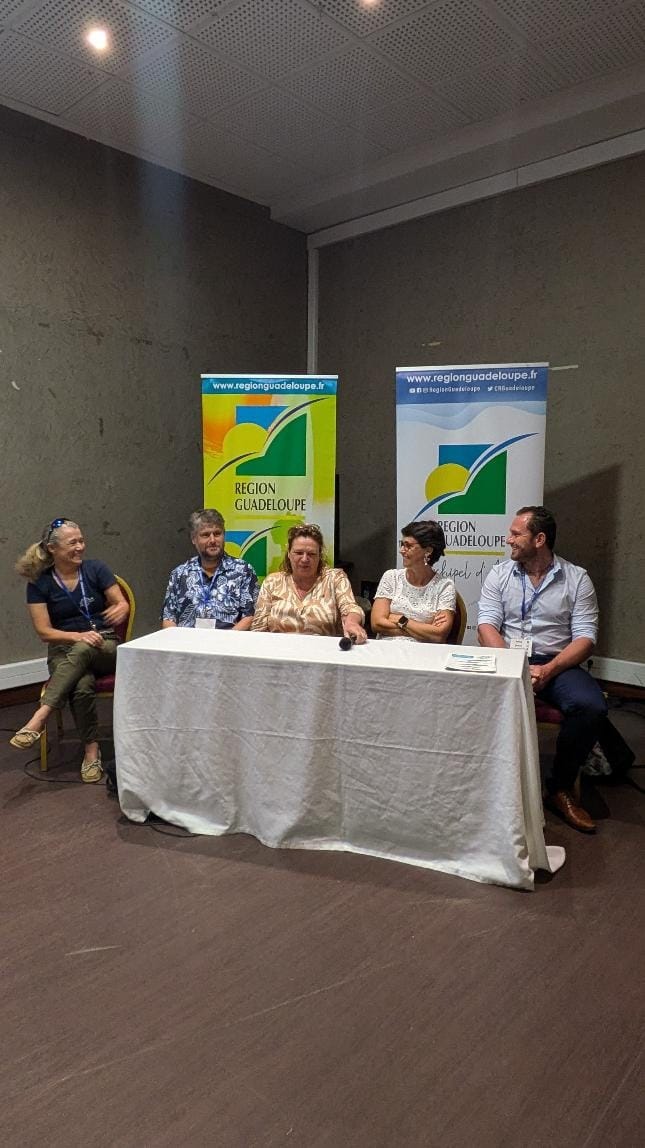
Dave and the other panel members (Emma Doyle, Monique Van de Water, Géraldine Conruyt, Jeffrey Bernus) that led the discussions on marine megafauna management following the session talks. Photo © Fadilah Ali
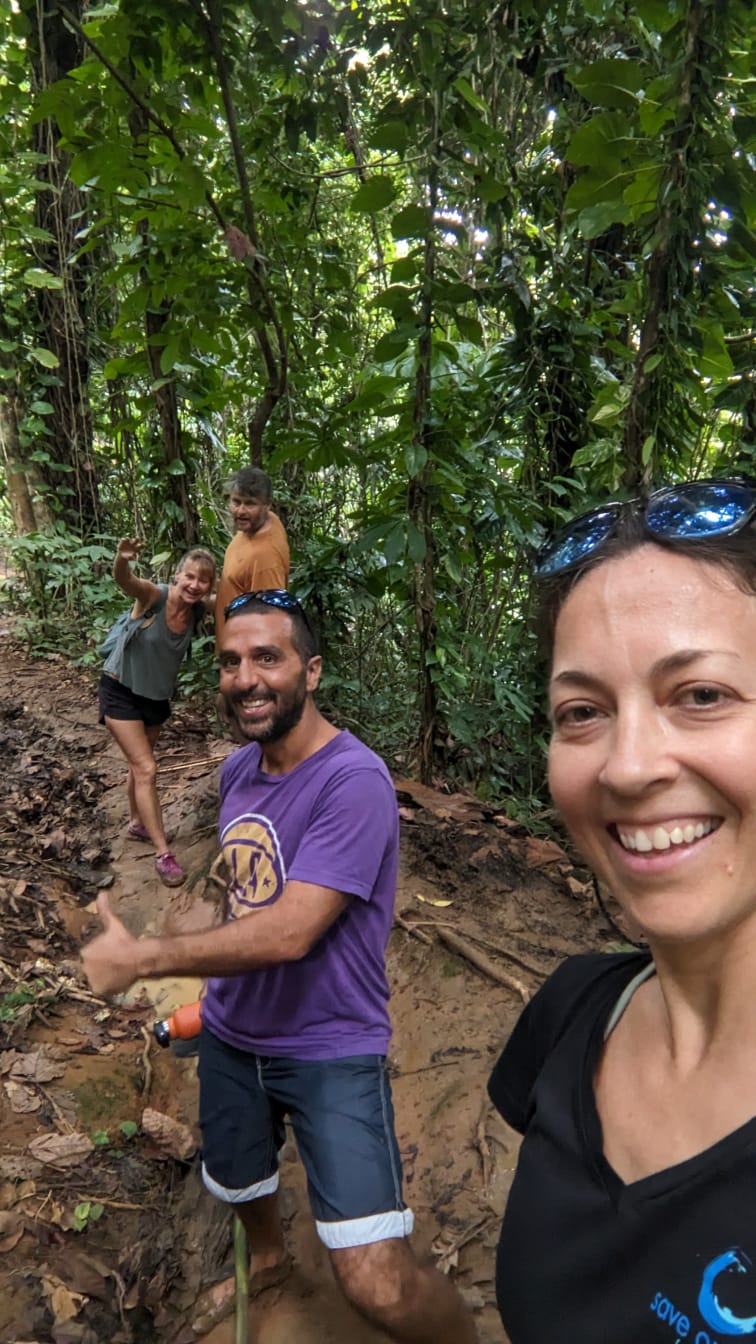
4. Kelly, Ori Tzadik, Kim Baldwin and Dave near the beginning of their treacherous hike to the waterfall. Photo © Kelly Kingon
All work and no play makes Jack a dull boy, so Kelly and Dave decided to have an adventure on the afternoon off from the meeting. A group of new and old friends gathered to make the hour-long trip to a waterfall that the locals recommended visiting. The day was partly cloudy, and storm clouds hung ominously in the distance as we reached the top of the path leading to the waterfall. We had been advised by the locals not to visit the waterfall if it was raining and on our descent we realized why. The path was windy and steep, often requiring us to use roots or trunks to clamber downwards. In addition, it was muddy (from rain earlier in the week) and we passed multiple washouts, which would have been torrents during a storm. To say the least it would have been treacherous, but more likely impossible to navigate the path in the rain. When we reached the bottom, we came to a majestic waterfall plunging into a crystal pool. Of course, hiking back up was more difficult than the original decent but the rain held off. As a reward we treated ourselves to locally brewed libations and appetizers at a nearby establishment, where we were joined by a cat, an army of frogs and an old dog.

2. The beautiful waterfall we hiked to on our free afternoon during the week of the conference. Photo © Kelly Kingon
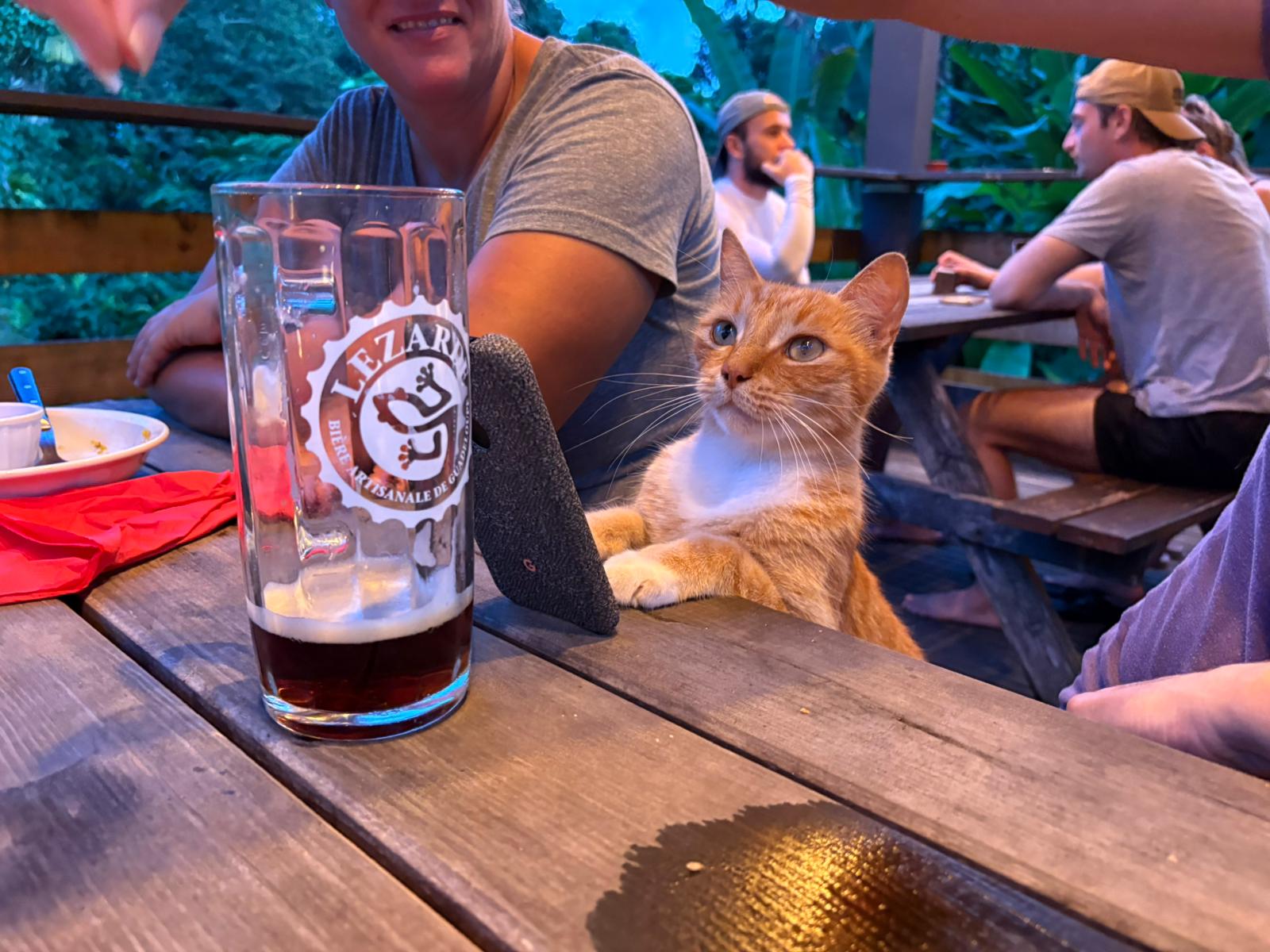
A cat that joined us for our post-hike renourishment at a local brewery on a beautiful property. Photo by Ori Tzadik
